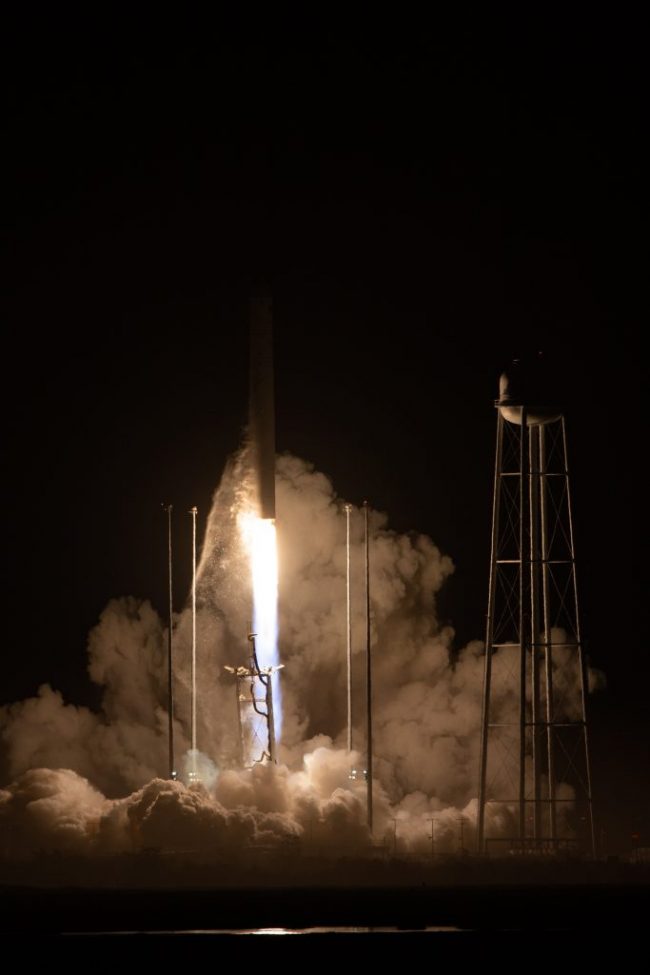
Crippled S.S. Sally Ride cargo ship docks safely at ISS
The S.S. Sally Ride – aka Cygnus-18 – has been safely “installed” at the International Space Station, NASA reported. The ship experienced a malfunction when one of its twin solar arrays failed to deploy. At 5:20 a.m. ET (9:20 UTC) on November 9, 2022, ISS crew members were able to capture the craft using the Canadarm2 robotic grappler.
Live: Installation of the “SS Sally Ride” Cygnus spacecraft to the @Space_Station delivering science experiments and snacks to the orbital laboratory: https://t.co/vVOFKfNlsq https://t.co/XvbTbrjPQ3
— NASA (@NASA) November 9, 2022
A NASA blog described the importance of the payload:
Cygnus also is delivering a new mounting bracket that astronauts will attach to the starboard side of the station’s truss assembly during a spacewalk planned for Nov. 15. The mounting bracket will enable the installation of one of the next pair of new solar arrays.
The Ride will eventually meet a fiery end during a violent fall from orbit:
Cygnus will remain at the space station until late January before it departs for a destructive re-entry into Earth’s atmosphere.
November 7: S.S. Sally Ride cargo ship limping to ISS
The S.S. Sally Ride – a Cygnus cargo spacecraft from Northrop Grumman Space Systems – lifted off early Monday morning (November 7, 2022) from NASA’s Wallops Flight Facility in the U.S. state of Virginia. The liftoff was nominal. But, while on route to the International Space Station, the uncrewed cargo ship deployed only one of its two solar arrays.
It was Northrop Grumman’s 18th contracted cargo resupply mission with NASA to the International Space Station. And the CRS-18 Cygnus spacecraft – named for the first American woman in space, Sally Ride – is scheduled to deliver more than 8,200 pounds (3,720 kg) of science and research, crew supplies, and vehicle hardware to the orbital laboratory and its crew.
So far, hopes are high it can still accomplish its mission.
NASA reported via a blog post that the aerospace company’s technical staff is working with the agency’s engineers to gather data about the failure of the second power array. Despite partial failure, the ship should complete its resupply mission on time, NASA said:
Northrop Grumman has reported to NASA that Cygnus has sufficient power to rendezvous with the International Space Station on Wednesday, November 9, to complete its primary mission, and NASA is assessing this and the configuration required for capture and berthing.
Tweets about the SS Sally Ride
Things not going s planned. SS SALLY RIDE encountered some trouble after separating from its Antares rocket ride and has only managed to unfurl just one of its two solar arrays. The freighter is trying 2 reach space station with only 1 solar array deployed https://t.co/JPmQwcLpWJ
— Janice Kyakundwa, PhD (@kyakundwa) November 8, 2022
Interesting that this happens on the SS Sally Ride. When Ride went to deploy the ERBS satellite on 41-G, a solar array got stuck. Her robot arm work saved the day.
— Brian Bradley (@brianjbradley) November 7, 2022
Honoring America’s first female astronaut
The S.S. Sally Ride rode to orbit atop one of the company’s Antares rockets, NASA said:
NASA commercial cargo provider Northrop Grumman’s Antares rocket with Cygnus cargo spacecraft aboard lifted off from Pad-0A at NASA’s Wallops Flight Facility on Virginia’s Eastern Shore at 5:32:42 a.m. EST (10:32:42 UTC) this morning.
The Cygnus craft currently heading for the ISS is named in honor of Sally Ride, America’s first woman spacefarer. Ride – the third woman to venture beyond Earth’s atmosphere, following Valentina Tereshkova in 1963 and Svetlana Savitskaya in 1982 – rode aboard NASA’s space shuttle twice, first in 1983 and again in 1984.
Ride died of pancreatic cancer in 2012.
Bottom line: The uncrewed cargo resupply ship – the S.S. Sally Ride – reached the ISS on schedule despite a faulty solar array.











